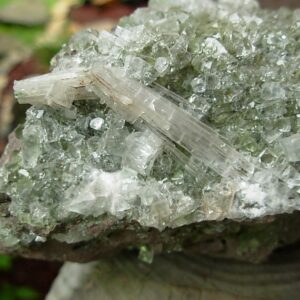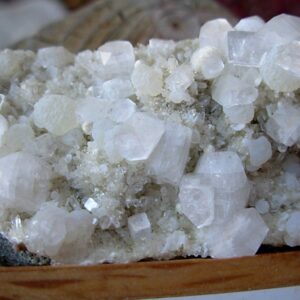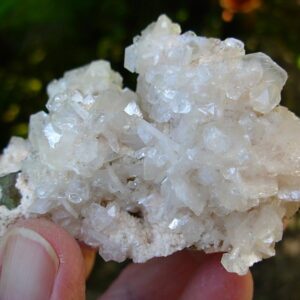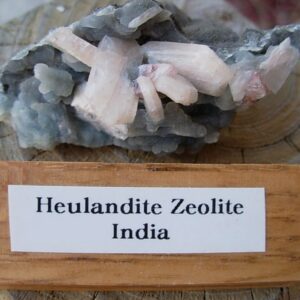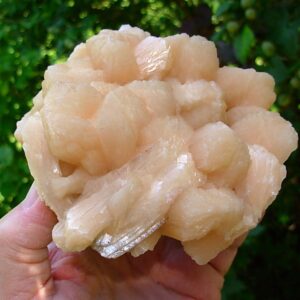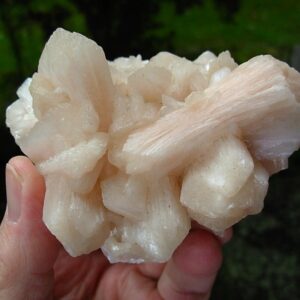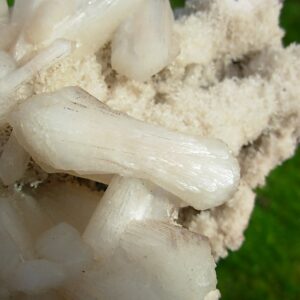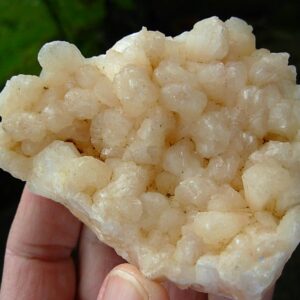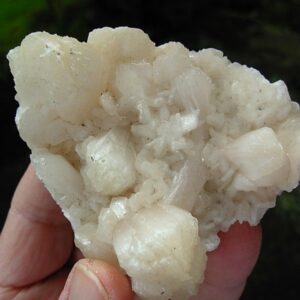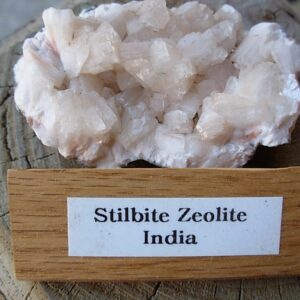Apophyllite, Stilbite and other Zeolites
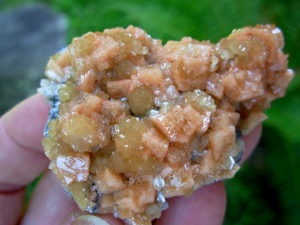 "Zeolite-ZSM-5-3D-vdW". Licensed under Public domain via Wikimedia Commons -
"Zeolite-ZSM-5-3D-vdW". Licensed under Public domain via Wikimedia Commons -
https://commons.wikimedia.org/wiki/File:Zeolite-ZSM-5-3D-vdW.png#mediaviewer/File:Zeolite-ZSM-5-3D-vdW.png
Heat water and you'll see steam rise as it comes to a boil. You can get the same thing to happen if you heat a unique rock called a Zeolite, which traps water inside itself. In 1756 a Swedish Geologist named Axel Cronstedt (1722– 1765…best known as the discoverer of nickel), observed this unique characteristic and gave these rocks the name "Zeolite". The name comes from the Greek words (zéō), meaning "to boil" and (líthos), meaning "stone".
We need to understand the physical make up to explain what unique features Zeolites have. Zeolites are micro porous crystalline solids with well-defined structures. They will normally contain silicon, aluminum and oxygen in their solid structure and cations*, water and other molecules in their open pores. *(An ion is an atom or group of atoms in which the number of electrons is not equal to the number of protons, giving it a net positive or negative electrical charge. An anion is an ion that is negatively charged, and is attracted to the anode or the positive electrode in electrolysis. A cation has a net positive charge, and is attracted to the cathode or the negative electrode during electrolysis.) Many occur naturally as minerals, and are extensively mined in many parts of the world. Others are man-made synthetics, and are made commercially for specific uses.
Because of their unique porous properties, zeolites are used in a variety of applications and are often referred to as molecular sieves. Some of the major uses of Zeolites are in petrochemical cracking (the process whereby complex organic molecules such as kerogens or heavy hydrocarbons are broken down into simpler molecules), ion-exchange (water softening and purification), and in the separation and removal of gases and solvents. Zeolites are stable solids that resist environmental conditions that degrade many other materials. They are not affected by high pressures or temperatures, they don't burn, they will not dissolve in water or inorganic solvents, and they will not oxidize in the air. They're not believed to cause any health problems or harm the environment. Zeolites stable and unreactive nature is not what makes them so useful.
The unique thing about zeolites is their ability to trap other molecules inside their micro porous crystalline structure which is a cage-like or framed type of structure. This is how water molecules and alkali or alkaline-Earth metal ions (sometimes called cations) become a part of zeolite crystals. Zeolites can trade other positively charged ions for the metal ions originally trapped inside them. This is known as cation exchange and as Cronstedt found over 250 years ago; they can gain or lose their water molecules very easily too (this is known as reversible dehydration). Zeolites have fixed sizes of openings in them which let small molecules pass through but trap larger ones, acting as molecular sieves. Natural Zeolites occur in random forms and mixed sizes. Man-made Zeolites are manufactured to a specific size to trap molecules of a certain (smaller) size inside them.
Zeolites help to provide a cleaner, safer environment. Most uses of Zeolites are the result of efforts to meet environmental concerns by reducing toxic waste and energy consumption. Zeolites have replaced harmful phosphate builders in laundry detergent. Phosphate builders have been banned in many parts of the world because of water pollution potential risks. Zeolites are also used as catalysts which make chemical processes more efficient, saving energy and reducing pollution, waste and by-products. Zeolites can also be used as solid acids which reduce the need for corrosive liquid acids. Zeolites can also be used as redox (reduction and oxidation electron exchange processes, reduction is the gain of electrons, oxidation is the loss of electrons) catalysts and sorbents that can remove atmospheric pollutants, such as engine exhaust gases and ozone-depleting CFCs. Zeolites can also be used to remove harmful organics and heavy metal ions such as those produced during nuclear fission from water.
Zeolites are a beautiful group of rare and complex crystal minerals for collectors. These are naturally formed in the cavities (vesicles) of volcanic rocks. Zeolites are Metamorphic Rocks. Some Zeolites form with subtle amounts of heat and pressure, marginally being called metamorphic, while others are found in classic metamorphic formations. Some of the most popular collectible Zeolites come from the Deccan Traps in India. There are 7 families of Zeolites as shown here. Some minerals such as Apophyllite and Okenite, are not Zeolites but are often found in combination with Zeolites, and sometimes erroneously referred to as Zeolites
Minerals In The Zeolites Group of 7 Families
Analcime family:
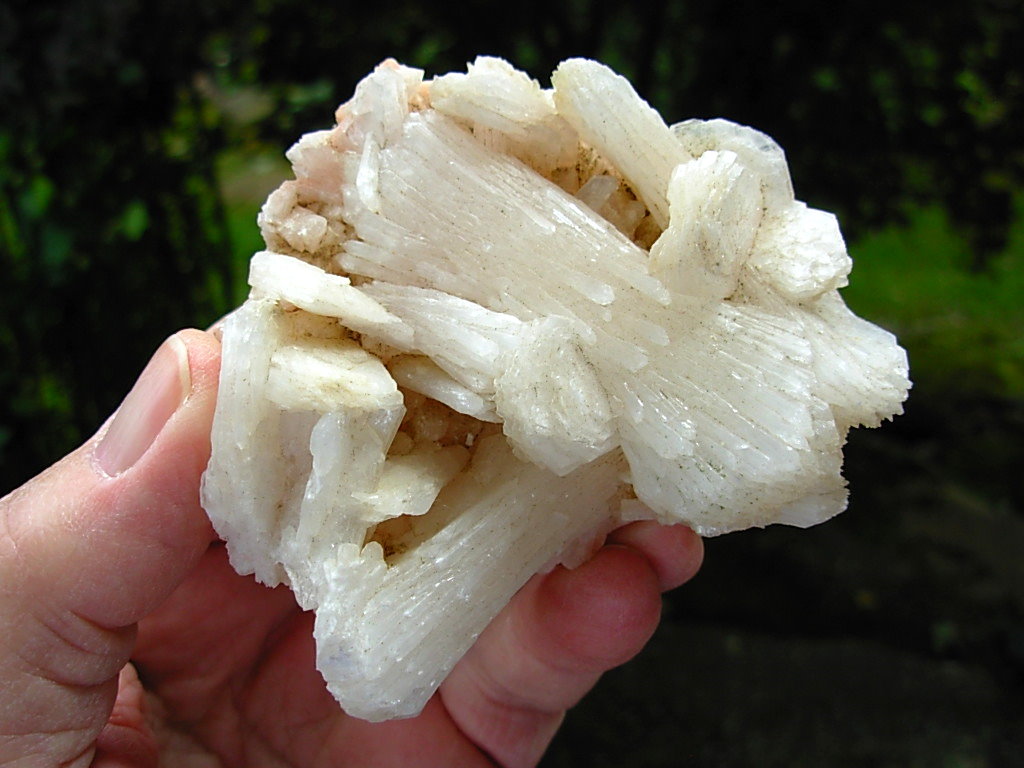
Gismondine family:
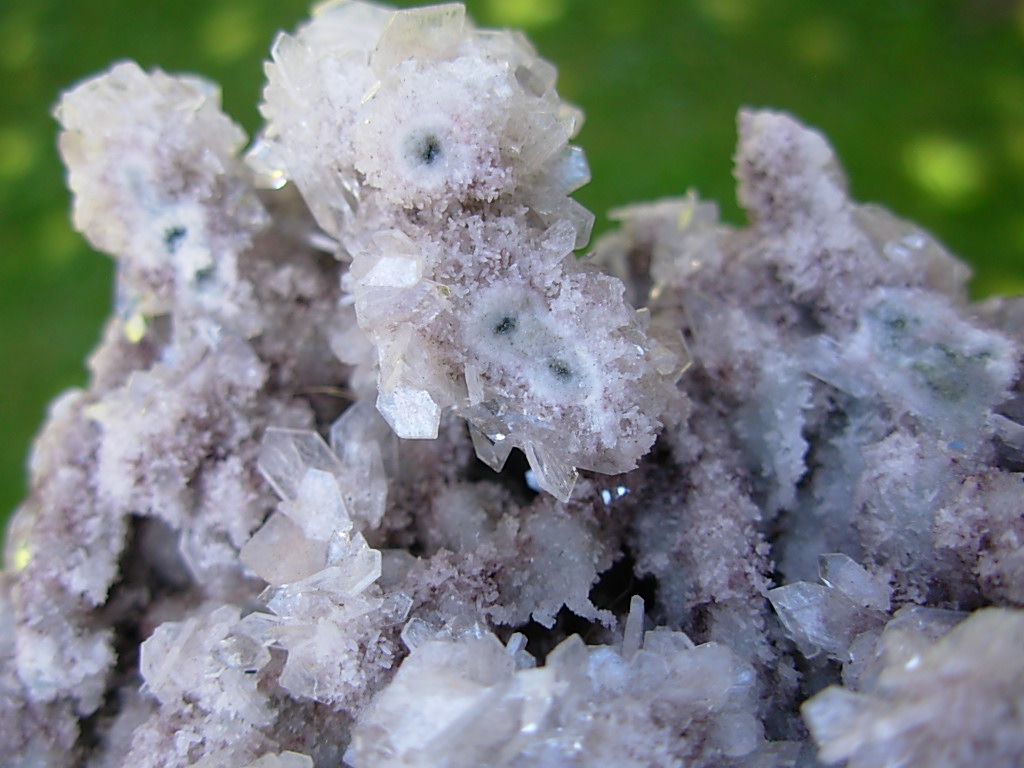
Heulandite family:
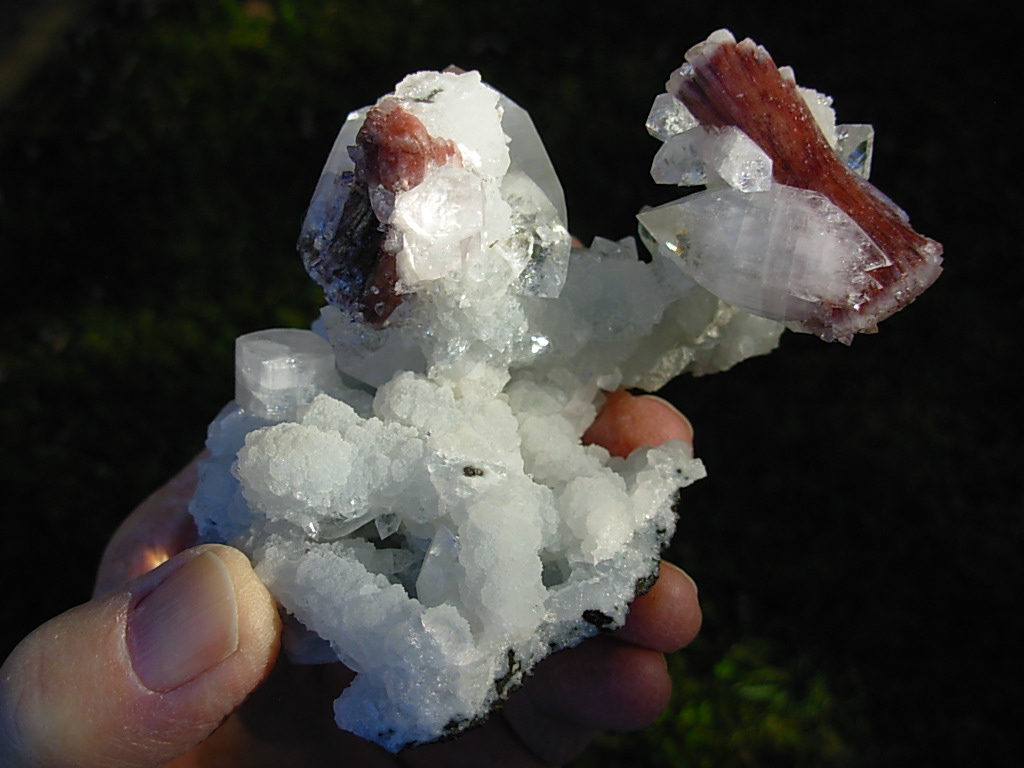
Chabazite family:
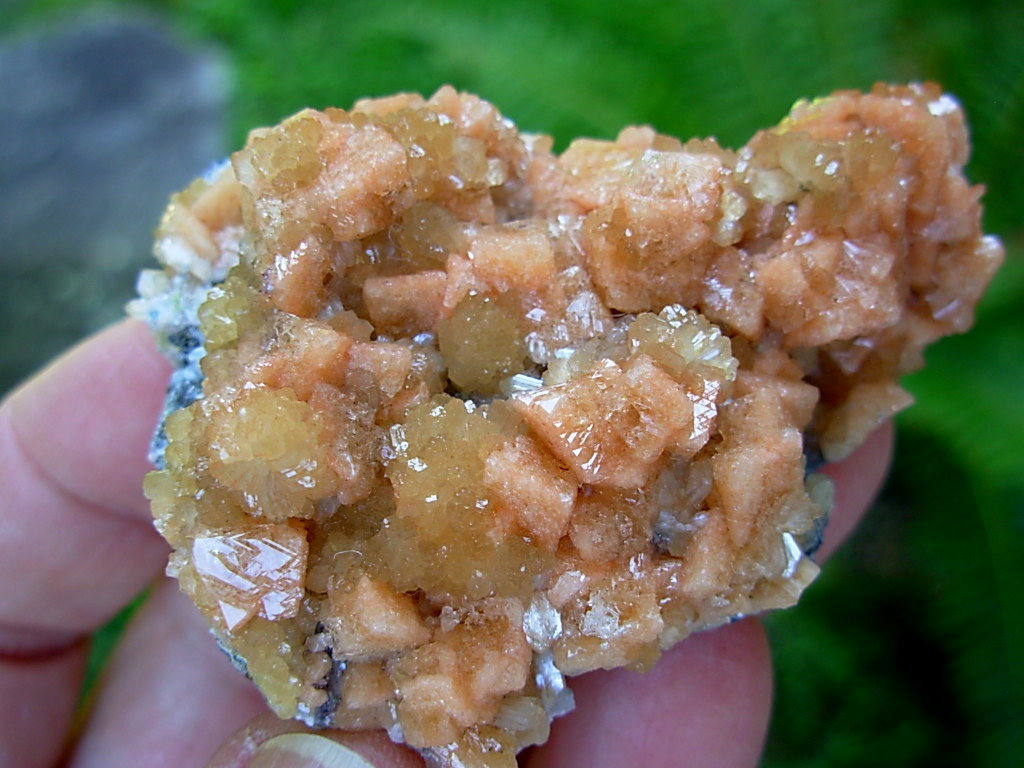
Stilbite family:
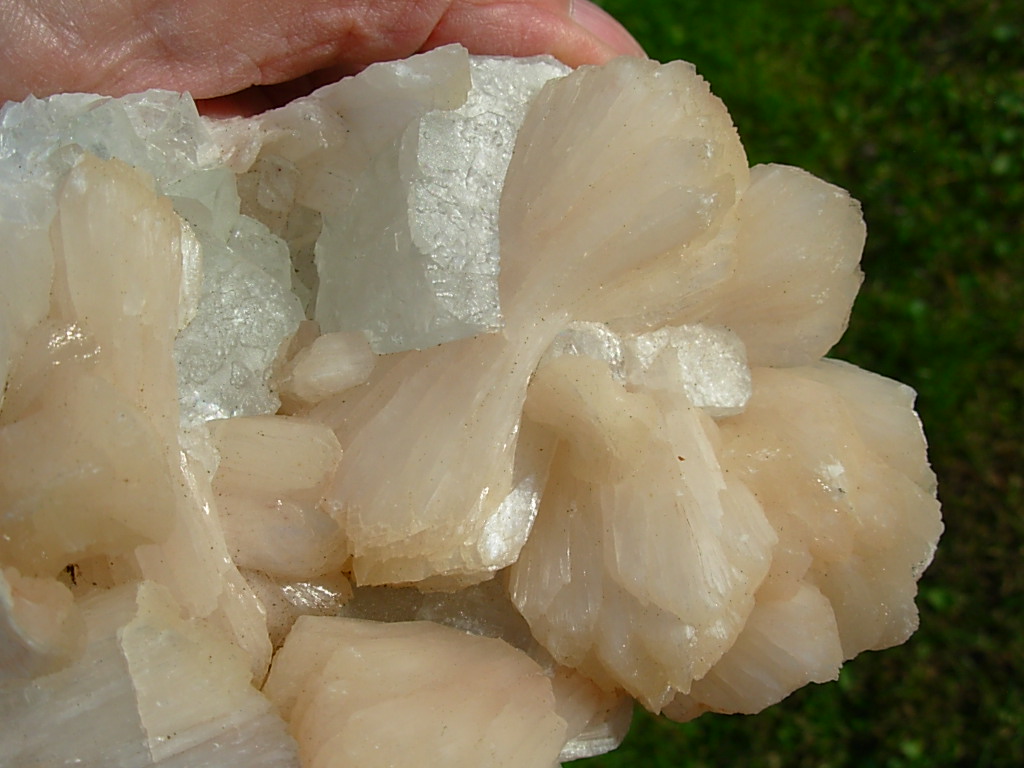
Natrolite family:
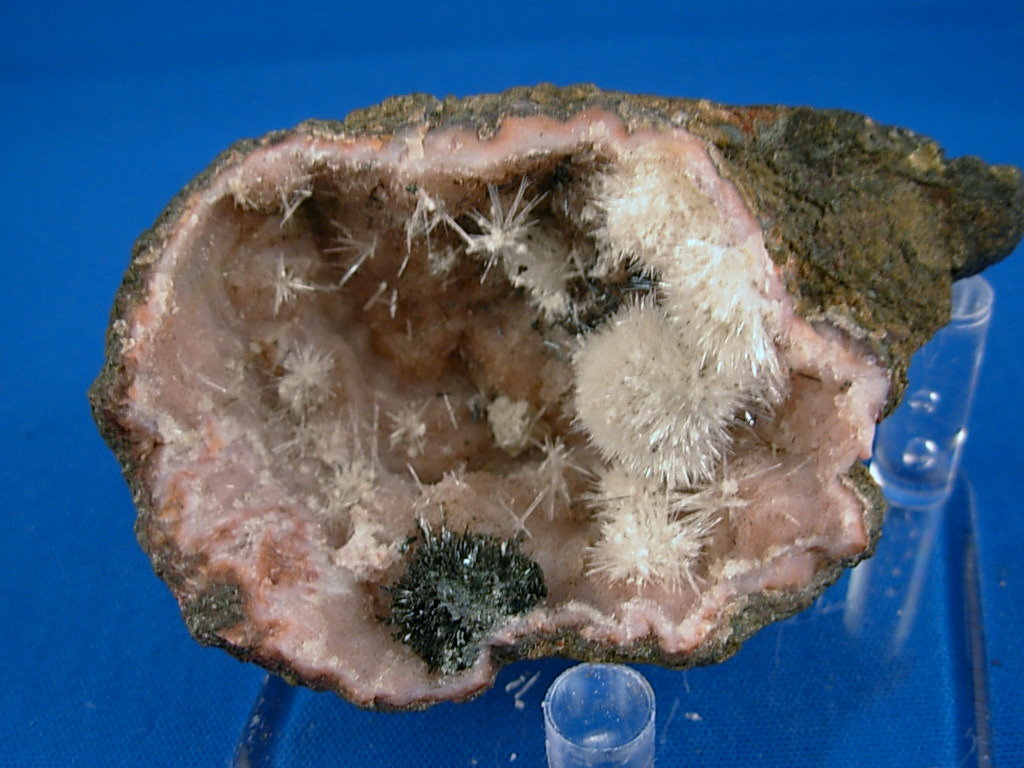
Harmotome family:
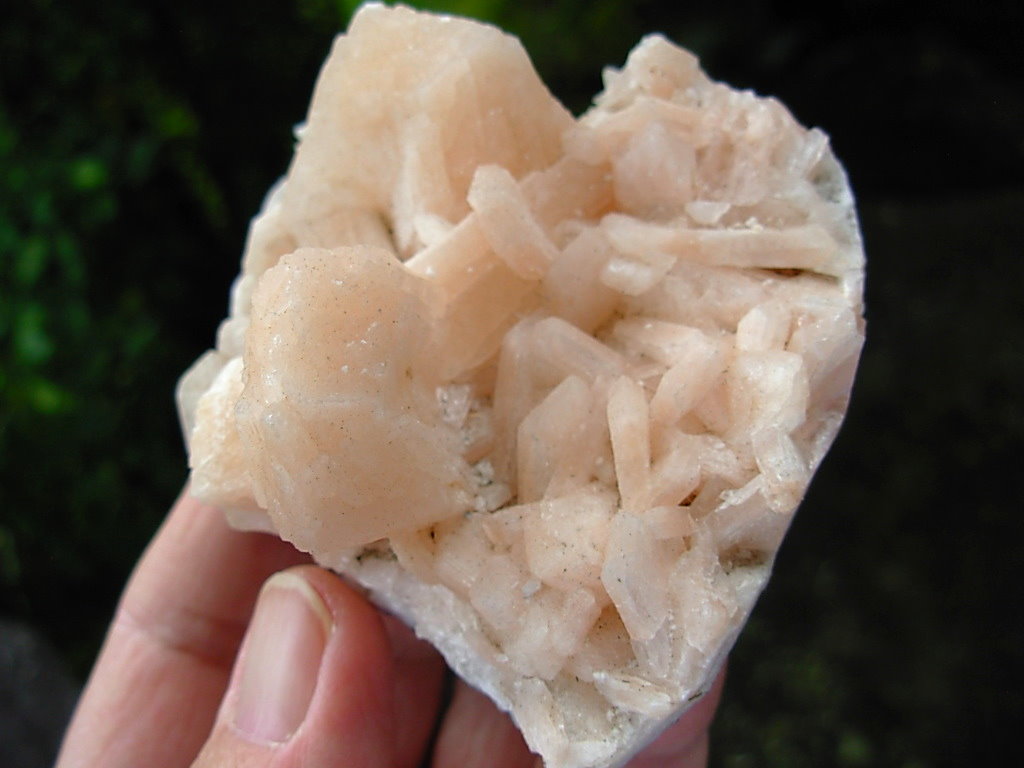
Apophyllite
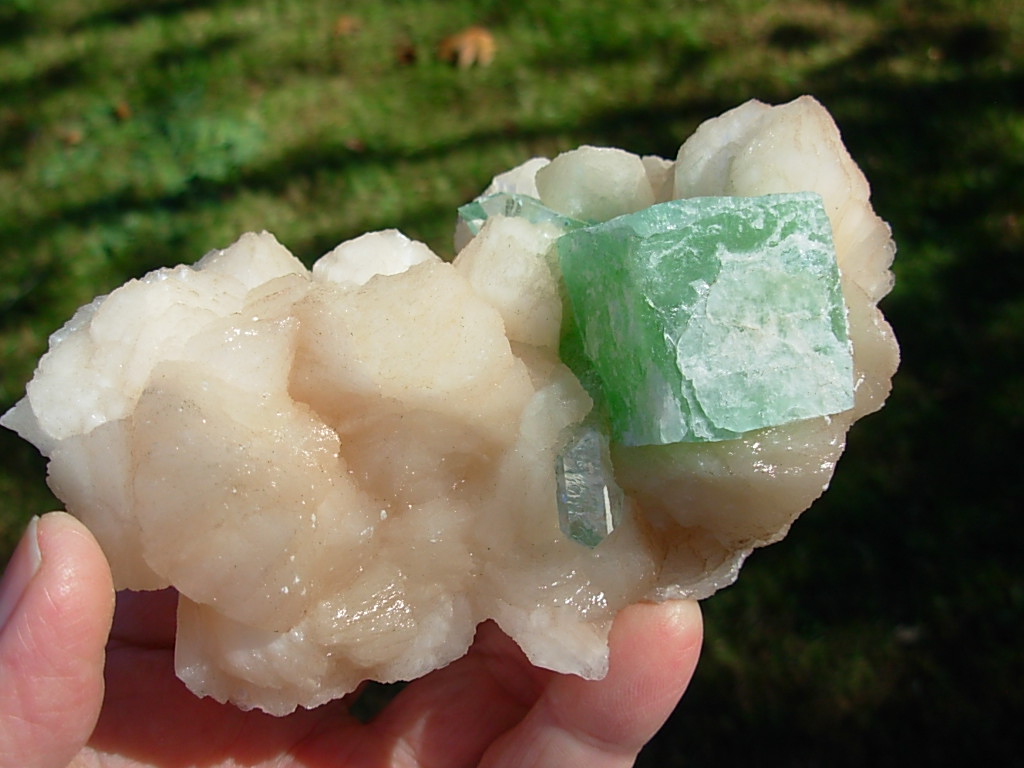
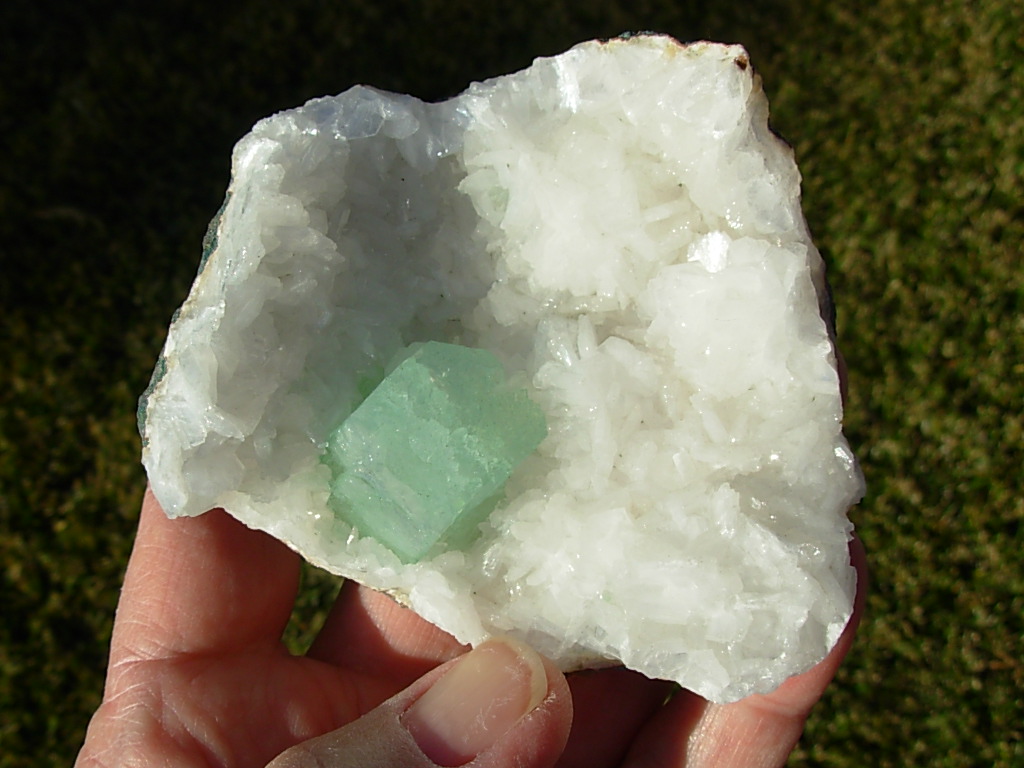
Apophyllite specimens are found in ancient lava and basalt flows. The crystals grow in the now solid cavities, called amygdules or vesicles, formed by air bubbles when the rock was molten. Apophyllite is also found in the voids in the contact metamorphic zone limestones that surround intrusive rocks. What makes apophyllite so popular among collectors is its fantastic crystals with their gem-like vitreous to pearly luster. Apophyllite almost always forms good crystals of two major types. The favorite crystal habit is the rectangular prism capped by a steep four sided pyramid (tetragonal dipyramid). By far its most impressive color is the pastel green color that augments specimens from Poona, India. Some crystals of apophyllite are cut as gems, but mostly just for collectors.
The other common crystal habit is a pseudo-cubic crystal that occurs when there is no pyramid and the prism is ended by a flat termination (a pinacoid). The pinacoid is a crystal form that is perpendicular to the length of the crystal and so can abruptly terminate the prism.
Apophyllite, whose name roughly means "to leaf apart" in Greek, is a mineral classic. It was given its name because crystals tend to peel or flake apart when they are heated due to the loss of water molecules. Although not that well-known by the general public, apophyllite is quite popular among mineral collectors. It is probably the first exotic mineral that a young collector will own after filling up on specimens of calcite, quartz, pyrite, galena, mica, fluorite, gypsum, apatite, etc, etc. After these common minerals, apophyllite seems like a real rarity and it offers so much to the collector. It has beauty, pastel colors, a bright luster and interesting well formed habits.
Stilbite
Stilbite is a common and perhaps the most popular zeolite mineral for collectors. Stilbite crystals can aggregate together to form a structure resembling wheat sheafs. This hourglass structure looks like several crystals stacked parallel to each other with the tops and bottoms of this structure fanning out while the middle remains thin. Stilbite's hallmark crystal habit is unique to stilbite and a rarer but related zeolite called stellerite. Stilbite is a striking specimen with its pearly luster and often colorful pink tints. Stilbite commonly forms nice crystals inside the petrified bubbles (called vesicles) of volcanic rocks that have undergone a small amount of metamorphism.
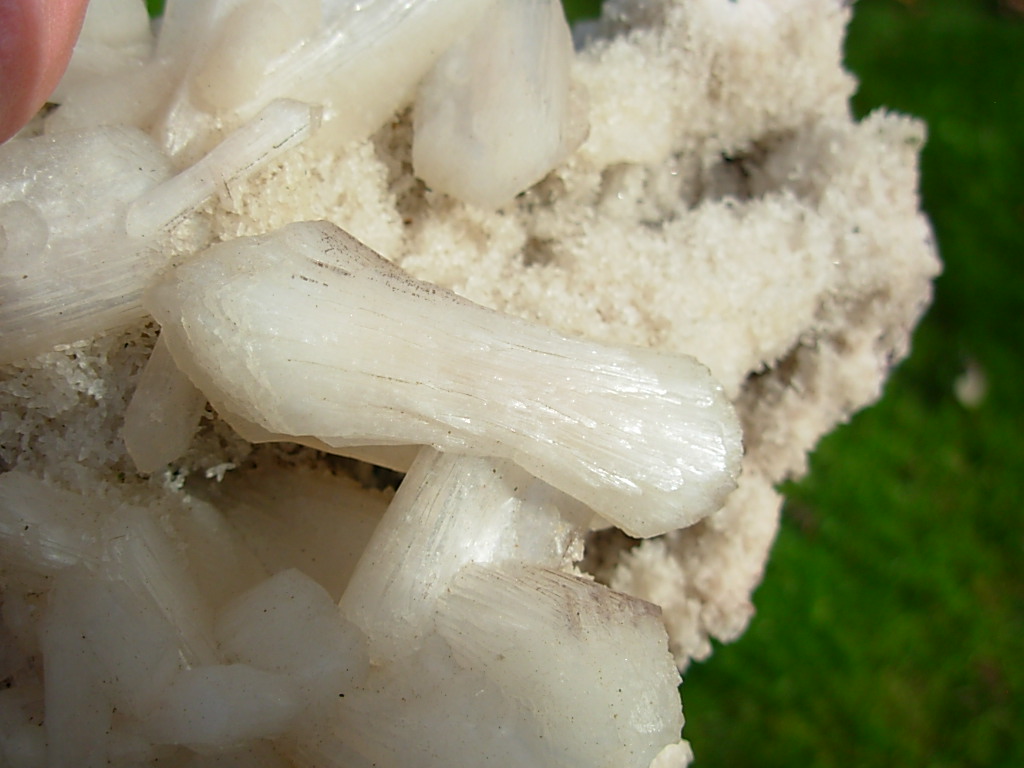
-
Apophyllite in Basalt Rare Large Cabinet Specimen 1
$129.00 Add to cart -
Clear Apophyllite Crystals with Calcite 42
$24.00 Add to cart -
Clear Apophyllite Crystals with Heulandite on Basalt matrix 45
$20.00 Add to cart -
Heulandite on Quartz 30
$22.00 Add to cart -
Large Cabinet Peach Stilbite Sheafs 15
$24.00 Read more -
Peach Stilbite Sheafs 8 from Jalgaon, India
$22.00 Add to cart -
Spectacular White Chalcedony Stalactite and Stilbite Crystal Cluster 12
$29.00 Add to cart -
Stilbite 6 from Aurangabad, India
$16.00 Add to cart -
Stilbite 7 from Jalgaon, India
$15.00 Add to cart -
Stilbite Crystals 31
$22.00 Add to cart

